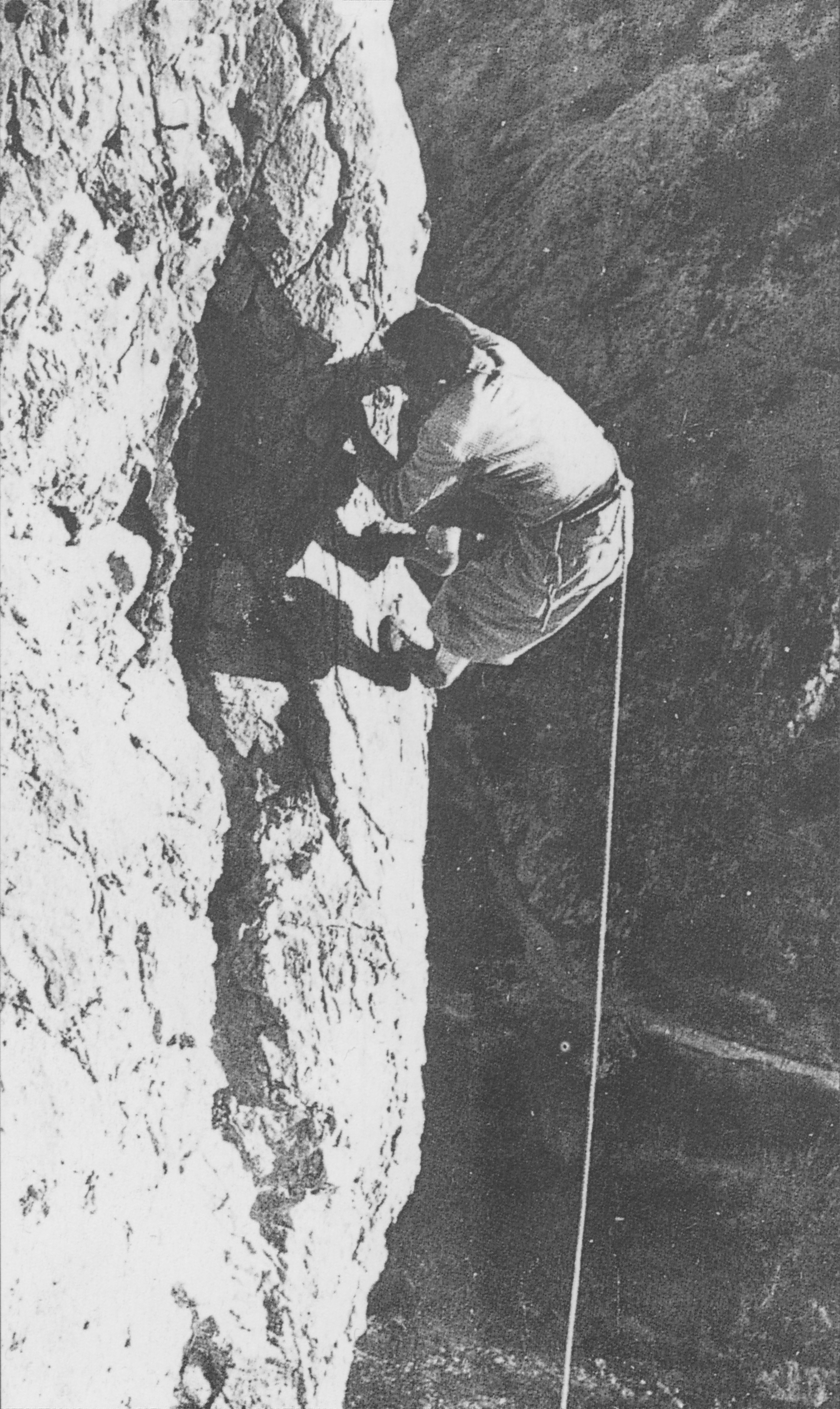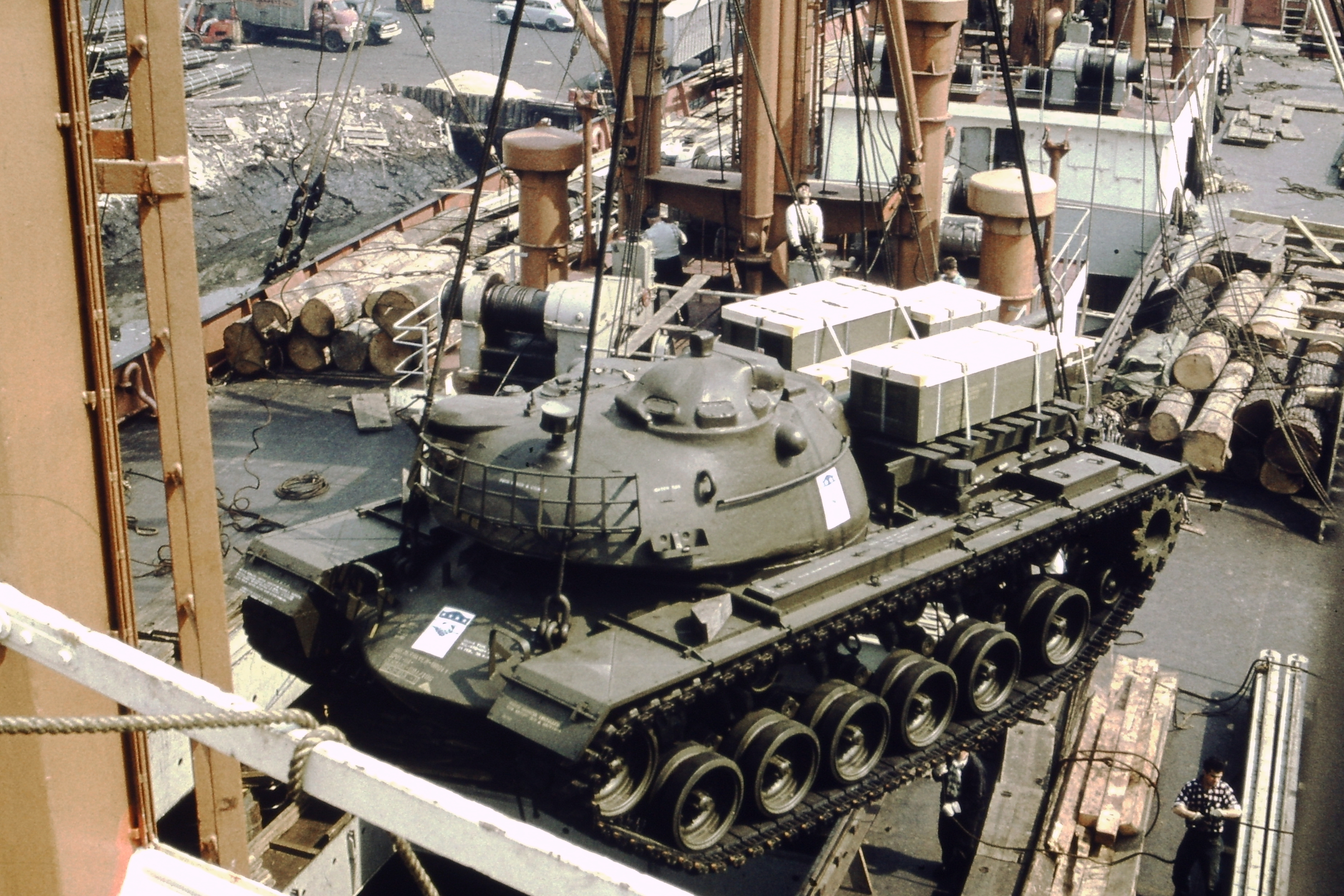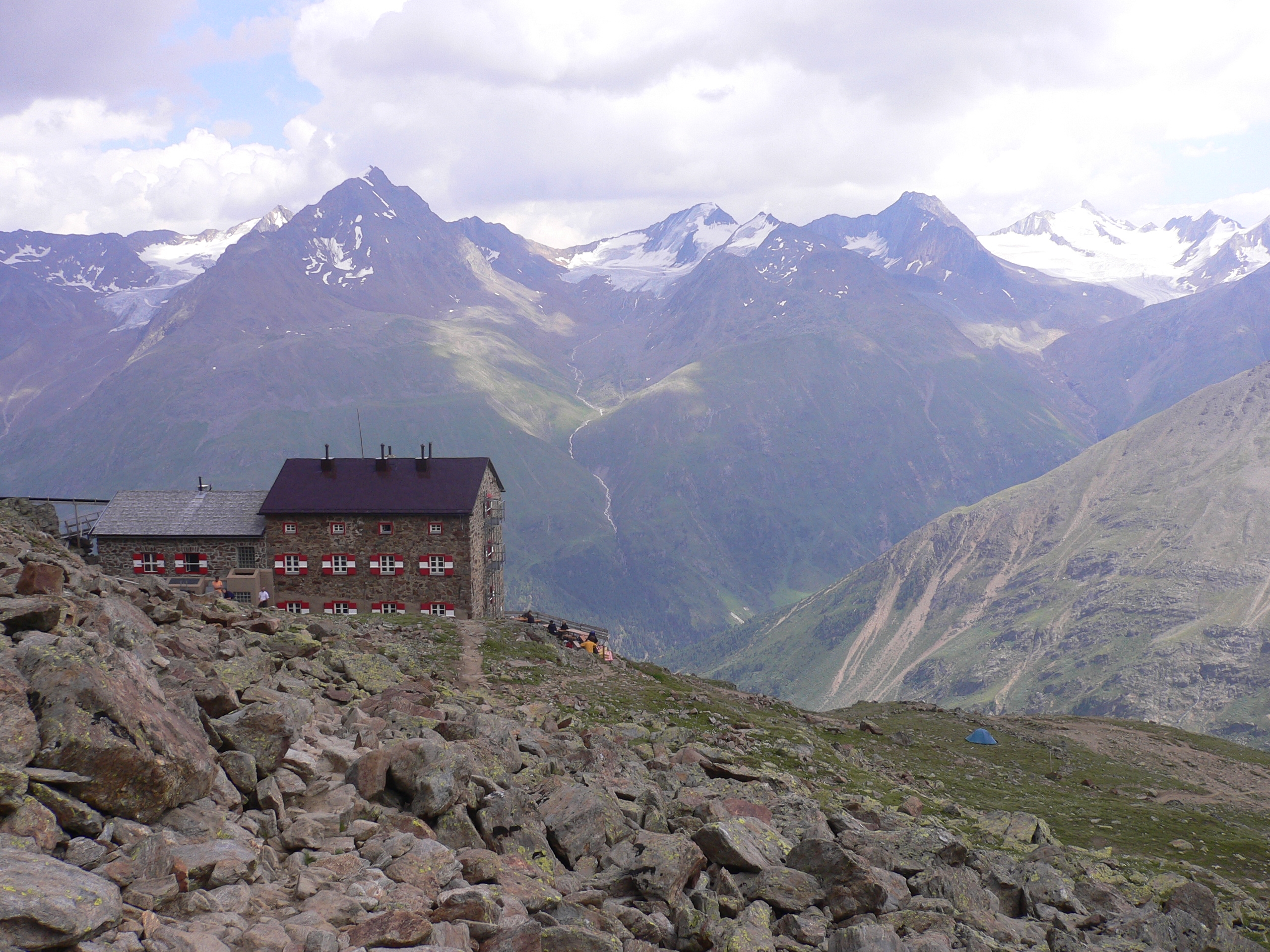|
Leonardo Emilio Comici
Leonardo Emilio Comici (21 February 1901 – 19 October 1940) was an Italian mountain climber and caver. He made numerous ascents in the Eastern Alps, particularly in the Dolomites (where he made over 200 first ascents during his career) and in the Julian Alps. Comici was nicknamed the "Angel of the Dolomites". In the 1930s and 1940s Comici and other climbers (including Riccardo Cassin, Raffaele Carlesso and Alvise Andrich) represented the Italian answer to the achievements of German climbers. Comici perfected the Bavarian technique of mountain climbing, and began the era of "sixth grade" climbing (at that time the highest climbing grade considered humanly surmountable). He was the inventor and proponent of using multi-step aid ladders, solid belays, the use of a trail/tag line, and hanging bivouacs, contributing greatly to the techniques of big wall climbing. Biography Emilio Comici was the son of Antonio Comici and Regina Cartago. A longshoreman in his youth, he began moun ... [...More Info...] [...Related Items...] OR: [Wikipedia] [Google] [Baidu] |
Trieste
Trieste ( , ; sl, Trst ; german: Triest ) is a city and seaport in northeastern Italy. It is the capital city, and largest city, of the autonomous region of Friuli Venezia Giulia, one of two autonomous regions which are not subdivided into provinces. Trieste is located at the head of the Gulf of Trieste, on a narrow strip of Italian territory lying between the Adriatic Sea and Slovenia; Slovenia lies approximately east and southeast of the city, while Croatia is about to the south of the city. The city has a long coastline and is surrounded by grassland, forest, and karstic areas. The city has a subtropical climate, unusual in relation to its relatively high latitude, due to marine breezes. In 2022, it had a population of about 204,302. Capital of the autonomous region of Friuli Venezia Giulia and previously capital of the Province of Trieste, until its abolition on 1 October 2017. Trieste belonged to the Habsburg monarchy from 1382 until 1918. In the 19th century t ... [...More Info...] [...Related Items...] OR: [Wikipedia] [Google] [Baidu] |
Bavaria
Bavaria ( ; ), officially the Free State of Bavaria (german: Freistaat Bayern, link=no ), is a state in the south-east of Germany. With an area of , Bavaria is the largest German state by land area, comprising roughly a fifth of the total land area of Germany. With over 13 million inhabitants, it is second in population only to North Rhine-Westphalia, but due to its large size its population density is below the German average. Bavaria's main cities are Munich (its capital and largest city and also the third largest city in Germany), Nuremberg, and Augsburg. The history of Bavaria includes its earliest settlement by Iron Age Celtic tribes, followed by the conquests of the Roman Empire in the 1st century BC, when the territory was incorporated into the provinces of Raetia and Noricum. It became the Duchy of Bavaria (a stem duchy) in the 6th century AD following the collapse of the Western Roman Empire. It was later incorporated into the Holy Roman Empire, ... [...More Info...] [...Related Items...] OR: [Wikipedia] [Google] [Baidu] |
Lake Misurina
Lake Misurina ( it, Lago di Misurina; Cadorino dialect: ''Lago de Meśorìna'') is the largest natural lake of the Cadore and it is 1,754 m above sea level, near Auronzo di Cadore (Belluno). The lake's perimeter is 2.6 km long, while the maximum depth is 5 m. Near the lake there are about ten hotels with accommodation for around 500 people. The particular climatic characteristics of the area around the lake make particularly good air for those who have respiratory diseases. Near the lake is the only center in Italy for the care of childhood asthma. The lake was the theme of a famous song by Claudio Baglioni. Lake Misurina is also the theme of the theatrical representation of the Longane di Lozzo. Lake Misurina is where the speed skating events were held during the 1956 Winter Olympics of Cortina d'Ampezzo – the last time Olympic speed skating events were held on natural ice. Misurina lies on the route of the Dolomites Gold Cup Race. Folklore lef ... [...More Info...] [...Related Items...] OR: [Wikipedia] [Google] [Baidu] |
Val Rosandra
The Rosandra Valley ( it, Val Rosandra, sl, Dolina Glinščice) is a valley centered on the Rosandra River (Slovene: ') in the municipality of Dolina in the Italian region of Friuli Venezia Giulia, between the city of Trieste and the border with Slovenia. It is also included into a natural park, mostly set around the Rosandra River and the surrounding hills reach an elevation of . The northern end of the valley crosses the Italian-Slovenian border. The Rosandra Valley is part of the Karst geographical region. Tourist attractions in the valley are Supet Falls near the village of Botazzo San Dorligo della Valle ( sl, Dolina; Triestine: or ) is a ''comune'' (municipality) in the Italian region Friuli-Venezia Giulia, located about southeast of Trieste, on the border with Slovenia. As of 31 December 2004, it had a population of 6,01 ... ( sl, Botač) and Our Lady of Siaris Church ( it, Santa Maria in Saris) perched high in the hills of the valley. Flora The Rosandra Valley h ... [...More Info...] [...Related Items...] OR: [Wikipedia] [Google] [Baidu] |
Italian Alpine Club
The Club Alpino Italiano is the senior Italian alpine club which stages climbing competitions, operates alpine huts, marks and maintains paths, and is active in protecting the Alpine environment. It was founded in Turin in 1863 by the then finance minister, and mountaineer, Quintino Sella; together with the Swiss Alpine Club, founded in the same year, it is the second oldest Alpine Club in the world, only preceded by the British Alpine Club. After First World War and the annexation of Trento and Trieste to Italy, it absorbed the "Società degli Alpinisti Tridentini" and the "Società Alpina delle Giulie". As of December 2018, it had 322,022 members, 507 sections and 309 sub-sections; the greatest numbers of members came from Lombardy (88,057), Veneto (54,948), and Piedmont (51,396). Its most famous achievement is the 1954 Italian Karakoram expedition to K2 that made the first successful ascent of K2. The CAI operates 433 mountain huts, 224 bivouacs and 106 smaller huts a ... [...More Info...] [...Related Items...] OR: [Wikipedia] [Google] [Baidu] |
München
Munich ( ; german: München ; bar, Minga ) is the capital and most populous city of the States of Germany, German state of Bavaria. With a population of 1,558,395 inhabitants as of 31 July 2020, it is the List of cities in Germany by population, third-largest city in Germany, after Berlin and Hamburg, and thus the largest which does not constitute its own state, as well as the List of cities in the European Union by population within city limits, 11th-largest city in the European Union. The Munich Metropolitan Region, city's metropolitan region is home to 6 million people. Straddling the banks of the River Isar (a tributary of the Danube) north of the Northern Limestone Alps, Bavarian Alps, Munich is the seat of the Bavarian Regierungsbezirk, administrative region of Upper Bavaria, while being the population density, most densely populated municipality in Germany (4,500 people per km2). Munich is the second-largest city in the Bavarian dialects, Bavarian dialect area, ... [...More Info...] [...Related Items...] OR: [Wikipedia] [Google] [Baidu] |
Julius Kugy
Julius Kugy (19 July 1858 – 5 February 1944) was a mountaineer, writer, botanist, humanist, lawyer and officer of Slovenian descent. He wrote mostly in German. He is renowned for his travelogues from opening up the Julian Alps, in which he reflected on the relationship between man, nature, and culture. He opposed competing nationalist ideologies in the Alpe-Adria region, insisting on the need of peaceful co-existence among Slovene, Italian and German peoples. Biography Julius Kugy was born to Slovenian family in Gorizia, then part of the Austrian Empire (now in Italy). His father Paul was a farmer from Lind (''Lipa'') near Arnoldstein in the Carinthian Gail Valley. His mother Giulia was the daughter of the Slovene poet Janez Vesel. The surname ''Kugy'' has the same origin as the surnames ''Kugi'', ''Kogoj'', and ''Kogej''. Kugy was educated in a multi-lingual environment: from an early age he was fluent in three of the four languages of his native Gorizia and Gradisca reg ... [...More Info...] [...Related Items...] OR: [Wikipedia] [Google] [Baidu] |
Napoleone Cozzi
Napoleone is an Italian male given name. St. Napoleone of Alexandria, alternatively rendered as ''Neopulus'', ''Neopolus'', ''Neopolis'' or ''Neópolo'', whose feast day is August 15, was martyred during the early fourth century during the Diocletianic Persecution. Gabriele Rosa (1858) followed G. F. Zanetti (1751) in accepting the meaning as "nose of lion", though this etymology is viewed sceptically in later sources such as Pio Rajna (1891). The form Napoleone is found as early as Napoleone Orsini Frangipani (1263-1342) a Roman Cardinal. Rosa (1858) identified the name from 1240 as a nickname of a member of the Della Torre family of Valsassina. The most famous holder of the name, with whom the name became virtually synonymous, was Napoléon Bonaparte Napoleon Bonaparte ; it, Napoleone Bonaparte, ; co, Napulione Buonaparte. (born Napoleone Buonaparte; 15 August 1769 – 5 May 1821), later known by his regnal name Napoleon I, was a French military commander an ... [...More Info...] [...Related Items...] OR: [Wikipedia] [Google] [Baidu] |
Caving
Caving – also known as spelunking in the United States and Canada and potholing in the United Kingdom and Ireland – is the recreational pastime of exploring wild cave systems (as distinguished from show caves). In contrast, speleology is the scientific study of caves and the cave environment.Caving in New Zealand (from Te Ara: The Encyclopedia of New Zealand, Accessed 2012-11.) The challenges involved in caving vary according to the cave being visited; in addition to the total absence of light beyond the entrance, negotiating pitches, squeezes, ... [...More Info...] [...Related Items...] OR: [Wikipedia] [Google] [Baidu] |
Longshoreman
A stevedore (), also called a longshoreman, a docker or a dockworker, is a waterfront manual laborer who is involved in loading and unloading ships, trucks, trains or airplanes. After the shipping container revolution of the 1960s, the number of dockworkers required declined by over 90%. Etymology The word ''stevedore'' originated in Portugal or Spain, and entered the English language through its use by sailors. It started as a phonetic spelling of ''estivador'' ( Portuguese) or ''estibador'' (Spanish), meaning ''a man who loads ships and stows cargo'', which was the original meaning of ''stevedore'' (though there is a secondary meaning of "a man who stuffs" in Spanish); compare Latin ''stīpāre'' meaning ''to stuff'', as in ''to fill with stuffing''. In Ancient and modern Greek, the verb στοιβάζω (stevazo) means pile up. In the United Kingdom, people who load and unload ships are usually called ''dockers''; in Australia, they are called ''dockers'' or ''wharfies''; ... [...More Info...] [...Related Items...] OR: [Wikipedia] [Google] [Baidu] |
Rifugio Zsigmondy-Comici Hütte
A mountain hut is a building located high in the mountains, generally accessible only by foot, intended to provide food and shelter to mountaineers, climbers and hikers. Mountain huts are usually operated by an Alpine Club or some organization dedicated to hiking or mountain recreation. They are known by many names, including alpine hut, mountain shelter, mountain refuge, mountain lodge, and mountain hostel. It may also be called a refuge hut, although these occur in lowland areas (e.g. lowland forests) too. Mountain huts can provide a range of services, starting with shelter and simple sleeping berths. Some, particularly in remote areas, are not staffed, but others have staff which prepare meals and drinks and can provide other services, including providing lectures and selling clothing and small items. Mountain huts usually allow anybody to access their facilities, although some require reservations. While shelters have long existed in mountains, modern hut systems date back ... [...More Info...] [...Related Items...] OR: [Wikipedia] [Google] [Baidu] |





